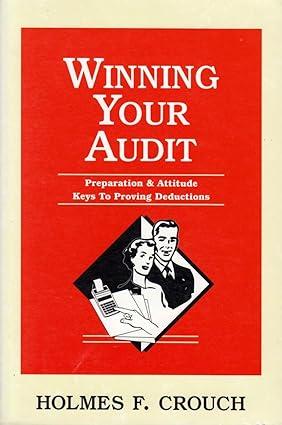Answered step by step
Verified Expert Solution
Question
1 Approved Answer
For each of the following brief scenarios, assume that you are reporting on a clients financial statements. Reply as to the type(s) of opinion (per
For each of the following brief scenarios, assume that you are reporting on a clients financial statements. Reply as to the type(s) of opinion (per below) possible for the scenario. How many paragraphs will the auditors report have? Will the report require a basis for opinion paragraph, an emphasis, or other language? In addition:
- Unless stated otherwise, assume the matter involved is material. If the problem doesnt tell you whether a misstatement pervasively misstates the financial statements or doesnt list a characteristic that indicates pervasiveness, two reports may be possible (i.e., replies 6 to 9).
- Do not read more into the circumstances than what is presented.
- Do not consider an auditor discretionary circumstance for modification of the audit report unless the situation explicitly suggests that the auditor wishes to emphasize a particular matter.
Types of Opinion
- Unmodifiedstandard.
- Unmodified with an emphasis-of-matter paragraph.
- Qualified.
- Adverse.
- Disclaimer.
- Unmodified with an emphasis-of-matter paragraph or disclaimer.
- Qualified or adverse.
- Qualified or disclaimer.
- Adverse or disclaimer.
- Other.
| Situation | Report |
|
|
Step by Step Solution
There are 3 Steps involved in it
Step: 1

Get Instant Access to Expert-Tailored Solutions
See step-by-step solutions with expert insights and AI powered tools for academic success
Step: 2

Step: 3

Ace Your Homework with AI
Get the answers you need in no time with our AI-driven, step-by-step assistance
Get Started


